How To Turn Off Usb Power Management Windows 10
Windows ten has several born features that reduce power consumption. In that location'due south a system-wide Battery Saver, a Power troubleshooter, USB selective suspend, and more than. These features help to extend the battery life of your Windows PC.
In this explainer, nosotros'll walk you through the intricacies behind "USB selective suspend," what it does on your Windows computer, and how to disable the feature if it ever poses a problem.
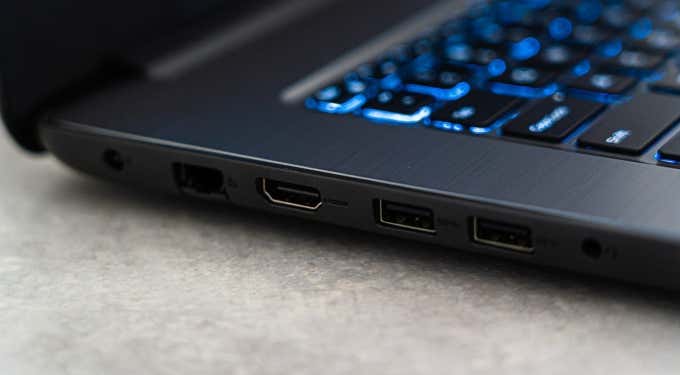
What is USB Selective Append?
Many external devices, accessories, and peripherals depict ability from your PC when yous plug them into a USB port. If your computer runs on battery power, these external devices will deplete your battery faster than usual. That'south why Windows temporarily suspends idle USB devices to conserve battery ability.
Say, for example, there's a USB fingerprint reader connected to your estimator, and y'all oasis't used it for over an 60 minutes. Windows may suspend the device and put it in a "depression power land" where it consumes very footling battery ability. Think of information technology as Windows hibernating or putting your USB device to sleep. If you accept several devices continued to your PC, Windows volition only suspend the idle USB devices and ports.
USB selectively hibernates passive USB devices to salvage battery power. That's all there is to the feature. Refer to this official Microsoft documentation to larn more than about the feature.
Problems Associated With USB Selective Suspend
Every bit described above, it's clear that USB selective suspend has immense benefits on your PC'south battery life. However, at that place are instances when the setting causes some USB devices to freeze or get unresponsive—mainly when your PC stays idle for too long.
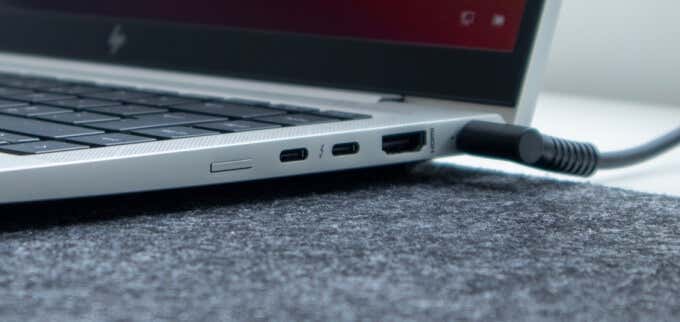
USB selective suspend is enabled past default on all Windows devices. While we recommend leaving USB selective append enabled on your battery-powered computer, you should disable the feature if yous're having USB-related troubles. Say, for instance, your USB drive stopped showing up in the File Explorer. Or, your Windows PC won't detect a USB keyboard/mouse.
How to Disable USB Selective Suspend on Windows 10
Disabling USB selective suspend is an constructive troubleshooting solution that can resolve the mentioned USB-related problems. There are e'er several ways to get this washed.
In the sections below, nosotros'll show you lot how to disable USB selective suspend from the Control Panel, Device Manager, or past using the Control Prompt.
Disable USB Selective Suspend From the Control Panel
One style to prevent your PC from temporarily suspending USB devices is to edit the Windows power settings. Follow the steps below for management.
1. Launch the Windows Control Panel and set the "View by" choice to Category.
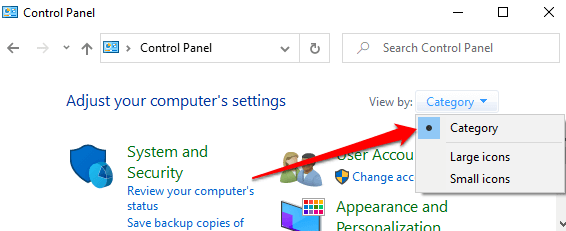
2. Open the System and Security carte and select Power Options.
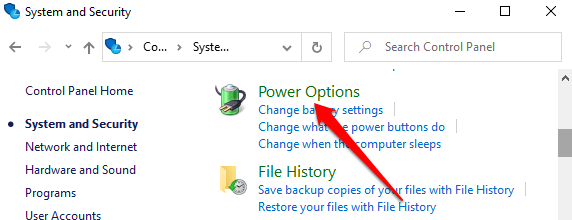
iii. Select the Modify program settings option next to your current power plan — Balanced or Power Saver or High Performance.
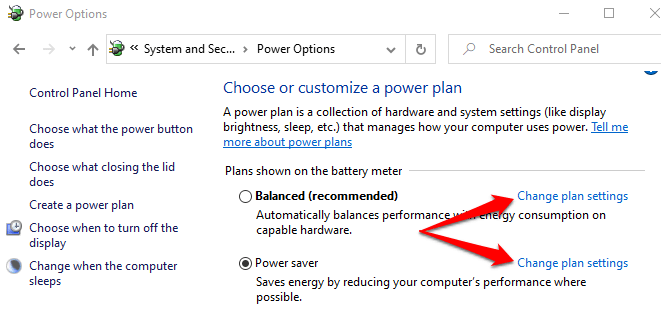
4. Select Alter advanced power settings. That will open a new "Power Options" window.
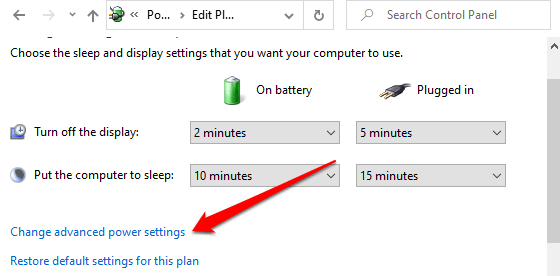
5. Expand the USB Settings section and double-click USB selective suspend setting.
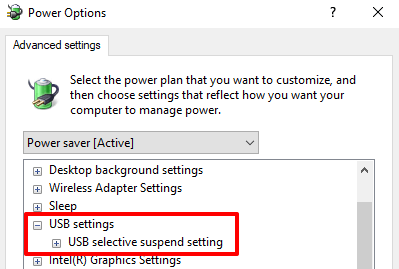
If you lot're using a laptop or tablet, you'll notice ii options in the USB selective append settings: "On Bombardment" and "Plugged In." Ideally, you'd simply desire to enable the feature when your PC is on bombardment power—since USB selective suspend is designed to extend bombardment life. Nevertheless, Windows hands you the liberty to disable USB selective append for both power options.
half dozen. Double-click the Enabled option side by side to the power plan you want to customize ("On bombardment" or "Plugged in") and select Disabled.
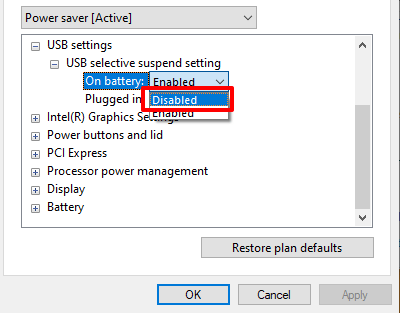
7. Select Apply and then OK to salve the new USB selective suspend setting.
Note that the USB selective suspend configuration is unique to your current/preferred power plan. If you switch plans (say from "Balanced" to "Ability saver"), you lot'll need to repeat these steps and disable USB selective suspend for the new battery plan.
Quick Tip: You lot can alter the USB selective suspend setting for another ability programme without going back to the Control Panel. Click the drop-down button showing the "Active" programme, select another power plan, and expand the USB settings section and proceed to disable USB selective append.
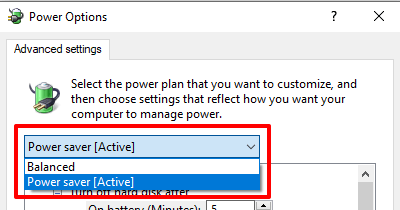
From the Device Manager
You can as well disable USB selective suspend past modifying the power management setting of the drivers powering your PC'south USB ports. Here's what yous need to exercise:
1. Correct-click the Start icon and select Device Director on the Quick Admission menu.
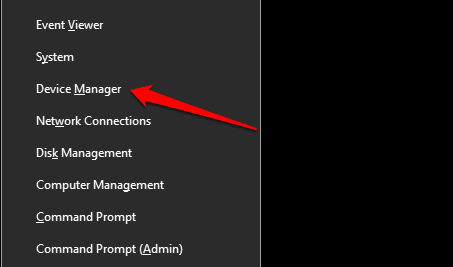
2. Expand the Universal Serial Bus controllers section, right-click whatsoever of the "Generic USB Hub" or "USB Root Hub" drivers, and select Backdrop.
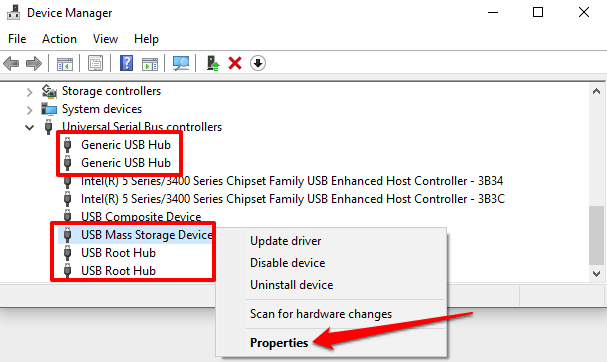
Annotation: The "USB Root Hub" manages your PC's USB ports for compatibility with low and high-speed devices/connections. On the other hand, "Generic USB Hub" powers USB hub devices and accessories.
3. Go to the Power Direction tab and deselect "Allow the figurer to plow off this device to save power."

4. Finally, select OK to save the setting. Repeat these steps for all relevant USB drivers on your computer.
Disable USB Selective Suspend Using Command Prompt
The Command Prompt is a tool that you lot can employ to perform a wide range of operations. By entering specific command lines in the tool, y'all can modify organization configurations, repair decadent files, adapt ability management settings, and lots more.
We'll show y'all how to disable USB selective suspend.
1. Right-click the Start carte du jour and select Run, or employ the Windows key + R shortcut.
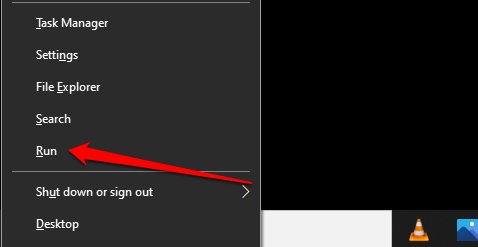
2. Type or paste the command below in the Command Prompt console and press Enter.
powercfg /SETACVALUEINDEX SCHEME_CURRENT 2a737441-1930-4402-8d77-b2bebba308a3 48e6b7a6-50f5-4782-a5d4-53bb8f07e226 0

Reconnect the problematic USB device to your figurer and cheque if it at present works correctly.
More Troubleshooting Techniques
Are y'all notwithstanding having problems using USB devices? Or, does your PC non disable USB selective suspend despite trying the methods mentioned above? Restart your estimator and check if that changes anything. Windows may besides fail to recognize a USB device that's loosely plugged into your estimator. Hence, ensure you fit the device tightly into the US port—or use another USB port.
If the issue persists, there could be a problem with your USB drivers. Open the Windows Device Managing director and update your PC'south USB drivers. Conversely, rolling back the USB drivers to a previous version may too ready the problem.
Practice non share my Personal Information.
Source: https://helpdeskgeek.com/windows-10/what-is-usb-selective-suspend-on-windows-10-and-how-to-disable-it/
Posted by: shanerloadere1987.blogspot.com

0 Response to "How To Turn Off Usb Power Management Windows 10"
Post a Comment